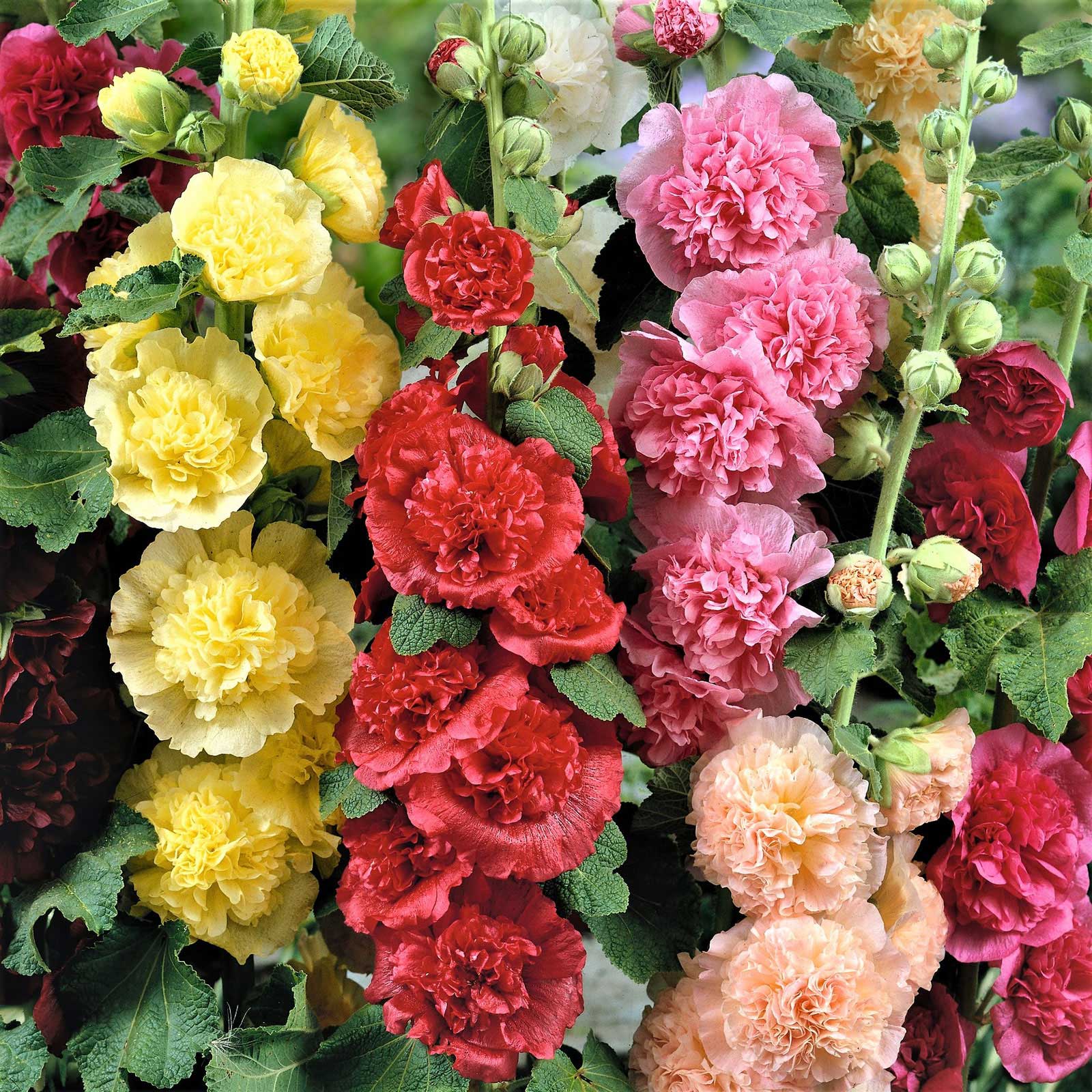
May 05,2023 by Gardenerstar
How to Plant and Grow Hollyhock
Hollyhocks are the height of cottage garden style. Chances are you’ve seen hollyhocks beside a barn, in front of a cute cottage-style house, or lining a white picket fence. Their most defining feature is their height: With a range of 3 to 8 feet tall, even the short end of the hollyhock spectrum is impressive. Since most varieties are biennials, you probably won't enjoy blossoms until the second season.

These stately towers of flowers bloom for a long stretch of summer, from June to August. The big blossoms start at the rosette foliage at the base, slowly working their way up the stalk and unfurling a little at a time. Once fully grown, the flowers may open simultaneously to create beautiful columns of color, ranging from yellow to pink to white.
Hollyhock Overview
| GENUS NAME | Alcea rosea |
| COMMON NAME | Hollyhock |
| PLANT TYPE | Perennial |
| LIGHT | Sun |
| HEIGHT | 3 to 8 feet |
| WIDTH | 1 to 3 feet |
| FLOWER COLOR | Blue, Orange, Pink, Purple, Red, White, Yellow |
| FOLIAGE COLOR | Blue/Green |
| SEASON FEATURES | Fall Bloom, Summer Bloom |
| SPECIAL FEATURES | Attracts Birds, Cut Flowers, Low Maintenance |
| ZONES | 10, 2, 3, 4, 5, 6, 7, 8 |
| PROPAGATION | Division, Seed |
| PROBLEM SOLVERS | Good For Privacy |
Where to Plant Hollyhock
Pick a full-sun spot—one with at least six hours of sunlight per day—with a natural wind barrier, such as a fence, building, or larger plantings, to keep your hollyhock from bending over. These plants can also grow in partial sun, but tend to flop over in full shade.
Hollyhock prefers rich, well-drained soil. It can tolerate clay, silt, or sand, but won't perform well in wet winter soil. This plant is not picky about pH, growing in acidic, neutral, or alkaline conditions.
Use hollyhocks as a stunning backdrop for flowerbeds, or add them to a cut flower garden for a regal addition to your arrangements. They are also well-suited to naturalized gardens. Hollyhocks typically grow against something for support, whether a wall, along a fence, or the back of a mixed border. Having a support system is especially important for taller varieties.
How and When to Plant Hollyhock
The easiest way to add these towering beauties to your garden is buying potted hollyhocks. You can place them as close as 12 to 18 inches apart, although you might consider giving them more room, since hollyhocks self-seed. Spacing them 3 to 4 feet apart will allow for this natural spread. In the spring, wait to plant until after the threat of frost has passed, and in the fall, plant your hollyhocks before the ground is frozen.
Be patient when planting, especially if you're growing hollyhock from seeds. Many of the most common varieties are biennials. This means they spend their first year growing foliage and storing nutrients for the following year. In the second year, hollyhocks use this stored energy to put on a spectacular floral show and create as many seeds as possible. Hollyhocks die at the end of their blooming season, but fortunately, they shed lots of seeds to start the whole process again.
Hollyhock Care Tips
Hollyhock has a reputation for being a little high-maintenance. This tall, fast-growing plant needs to be protected from the wind, and the foliage may need to be trimmed at times. Growth comes easily, however, and fertilizer needs are minimal.
Light
While full sun is best, hollyhocks will also grow in partial sun or light shade. Lots of sunlight equals less spindly plants and a lower likelihood of disease. Make sure to seek a sunny area that also offers refuge from the wind—for example, a fence or arbor to lean against.
Soil and Water
Hollyhock can handle lots of different soil types. Ideally, seek a spot with well-drained soil, though hollyhock will also take root in clay. pH isn't a major consideration, as these towering flowers will grow in acidic, neutral, or alkaline soil. Make sure to avoid wet winter soil.
When you first plant a hollyhock, keep it well-watered to allow the roots to take hold, then continue to water it regularly throughout the growing season. Using a soaker hose, direct the water at the base of the plant to avoid splashing the leaves; wet leaves can lead to rust, the most common plant disease in hollyhocks.





